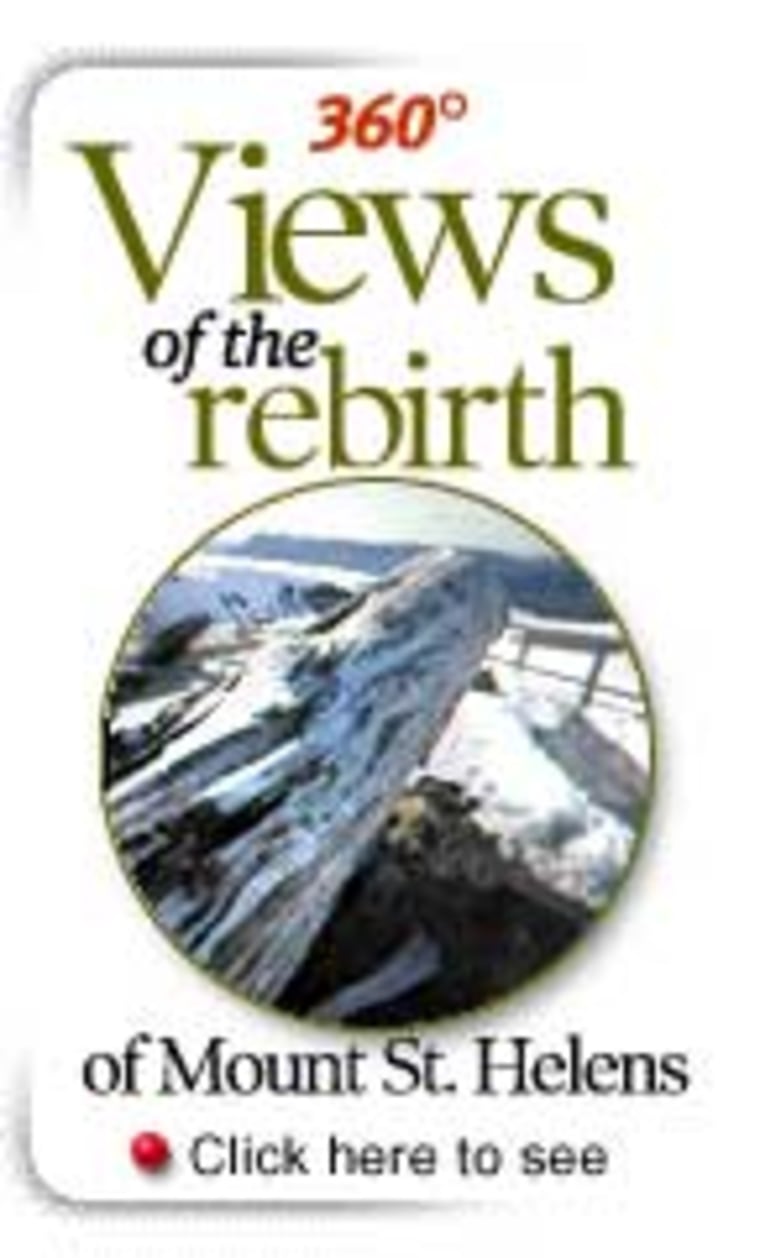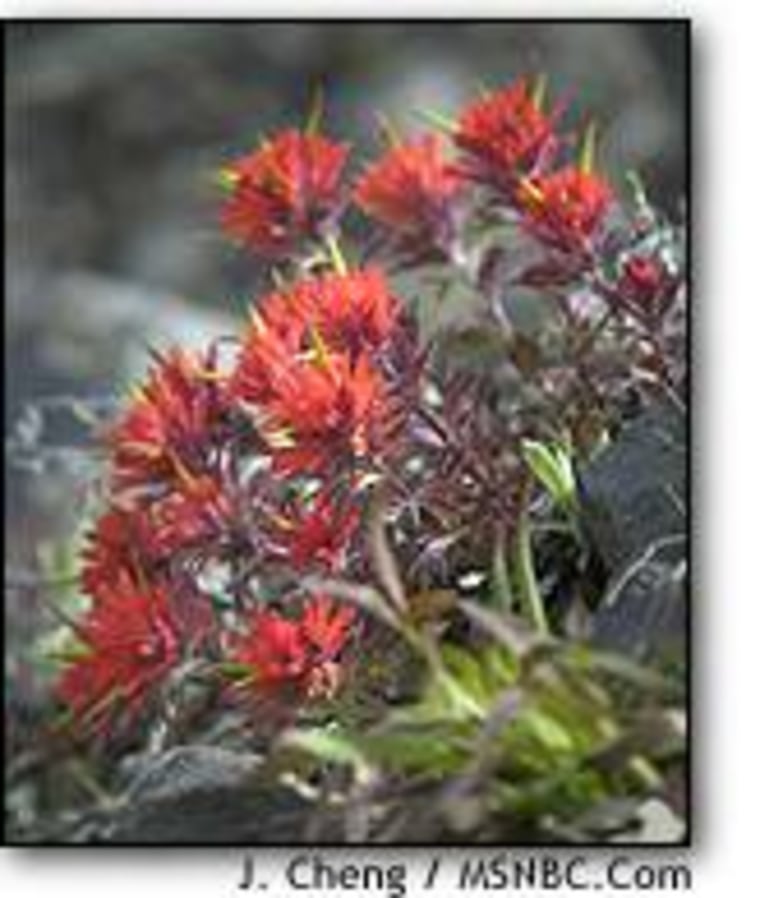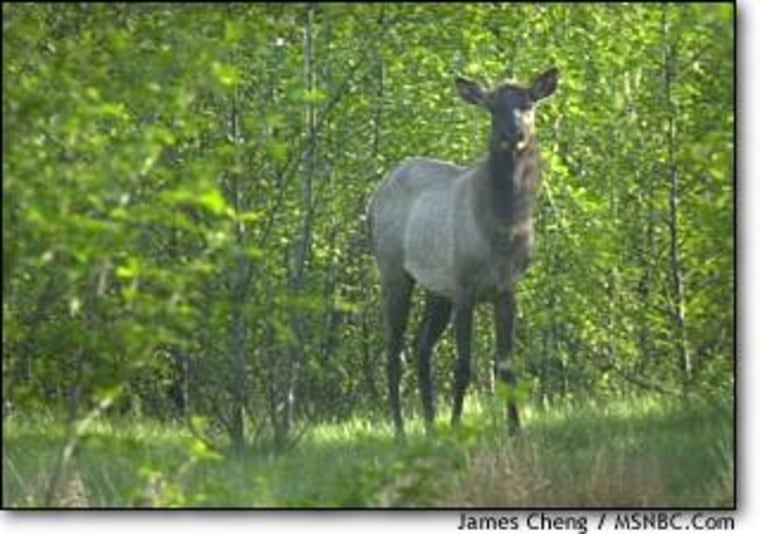When Mount St. Helens blew its top 20 years ago Thursday, the area looked like a lifeless moonscape, scientist Jerry Franklin says. “It was a gray, uniform landscape and we thought, ‘Oh boy!’ We get to watch everything start over from scratch.” Nothing could have been further from the truth.

A MONTH after the eruption, Franklin stepped out of a helicopter into the blast zone for the first time — and was greeted by a fireweed sprout stubbornly pushing through a crack in the dried ash.
Two decades later, scientists have learned new lessons about the ways ecosystems survive and recover, including how gophers helped salamanders get around after the blast, and how clear-cut forests were some of the first areas to spring back after the eruption.
Franklin, a forestry professor at the University of Washington, still chides himself for initially misjudging the mountain’s ability to recover and renew itself.
“What a stupid perspective. I mean, how could I have been that dumb?” he says. “Like so many things in ecology and biology, some of these things are so obvious to us now it hurts. And all you wonder about is what is it that’s not obvious to you now, but will be to the next generation.”

Peter Frenzen, a forest ecologist and lead scientist at the Mount St. Helens National Volcanic Monument, agrees. “My major lesson was that a natural disturbance leaves anything but a clean slate,” he says.
For scientists like Franklin and Frenzen, the eruption destroyed not only the pristine forests surrounding the mountain, but the conventional models and theories that had been the cornerstones in their disciplines.
The mountain’s recovery told a radical new story, not just of epic destruction, but of resiliency and renewal.
‘KIDS IN A CANDY STORE’
Frenzen, whose career has been devoted to Mount St. Helens, recalls a night he spent as a graduate student near the summit in 1978. A crescent moon lit up nearby Mount Adams, Mount Rainier and Mount Hood. A summer meteor shower rippled overhead and, as if that wasn’t spectacular enough, the northern lights played in the distance.
“I lay there all night long just watching,” says Frenzen. “I never would’ve thought that what I was sleeping on would now be gone.”
The eruption came as a cataclysmic shock to many of the scientists working at the mountain — something akin to having a nuclear bomb go off in their living room.

“In about 10 minutes time, the avalanche and blast essentially leveled about 230 square miles of forest,” says Frenzen.
At first glance, the destruction in the region looked fairly uniform. But as researchers rushed in to set up field experiments, it quickly became apparent that the eruption had affected individual ecosystems and geographical areas in dramatically different ways — a factor that would be key to the mountain’s renewal.
Given the ecological variety, Mount St. Helens offered researchers a giant living laboratory in the ways organisms could survive a devastating disturbance.
“A lot of scientists looked at the eruption and said, ‘Wow - what an opportunity,” says Franklin. “It was like being kids in a candy store.”
DEVASTATION ON AN EPIC SCALE
In some areas, the blast hurled powerful mudflows made up of melted snow, boulders and soil down the mountain into the Toutle River and other waterways. The north side of the volcano was scoured by 1,100 degree pyroclastic flows of pumice and gas that incinerated everything in their path.
Still other areas were buried under an avalanche of debris, a landslide with an average depth of 150 feet that was produced when the north side of the mountain collapsed and slid away.
A landslide rushed into Spirit Lake, sending a tsunami 300 feet high up the opposite ridge, where it turned around and flooded back into the lake again. The lodges and cabins that once dotted Spirit Lake’s shores remain buried beneath several hundred feet of material under the current lake bottom.
Frenzen recalls that “the blast ... struck many of the ridges facing the volcano, not only toppling the trees but in many cases ripping them completely out of the ground and depositing them on the back sides of the ridges.”
Forests farther from the blast were scorched dead by furnace-hot winds, while others that escaped the direct force of the blast were blanketed in a layer of ash that reached up to three feet in some places. Eventually a huge ash cloud produced by the explosion circled the world.
The ash itself also varied tremendously. In some places it was hard as rock, while in others it mixed with rain and melting snow to create “the gummiest, gooiest mess,” says Joe Antos, a biologist with the University of Victoria in British Columbia. Antos spent months wading around in the muck using everything from vacuum cleaners to toothbrushes to collect samples.
NATURE’S SURPRISES
One of the first discoveries researchers made was that despite the devastation, some of the ecosystems they thought would be the most fragile turned out instead to be the most hardy.

Within two months after the eruption, alpine meadows filled with mountain flowers were once again blooming on the volcano’s high slopes as if to thumb their noses at nature’s awesome display of deadly force. The meadows had been buried under late-lying snow banks during the eruption, and many emerged nearly intact.
Another shock were the acres of forests that had been clear-cut before the blast. Most scientists predicted they would have been some of the slowest areas to recover, but in fact they proved to be the “Comeback Kid” of the region.
“Damn. The clear-cuts?” Franklin remembers asking himself. “This is not right. I love my old-growth forests. What are the clear-cuts doing being resilient?”
The areas returned to life quickly, and with a surprising degree of diversity. In the years leading up to the blast, hardy plants such as prairie lupine and thistle had already taken over the clear-cuts, providing the basis for an ecosystem capable of withstanding harsh conditions.
Meanwhile, erosion — generally considered to be a negative force — proved to be an unlikely ally in the mountain’s struggle to recover.
“There were lots of live roots present in the buried soil, and when erosion washed the overlying ash away, they had a path to resprout,” says Frenzen.
NEVER UNDERESTIMATE A GOPHER
Most scientists initially thought life would have to return to the mountain from outside the region - either by blowing in on the wind or by traveling in over land. But once again, nature had another trick up its sleeve.
Left behind in the devastation were organisms and structures — everything from roots, seeds, insects and other animals to dead logs and snags — that acted as lifeboats for other species. Known as “biological legacies,” these survivors and leftovers helped lay the foundation for new ecosystems.

The unassuming pocket gopher was one such legacy.
“The gopher is the unsung hero of Mount St. Helens,” says Charlie Crisafulli, an ecologist with the U.S. Forest Service who has studied the mountain since 1981. While most mammals died instantly in the blast, gophers survived in underground tunnels and went on to thrive, their populations soaring.
The hundreds of miles of gopher tunnels that riddled the mountain became shelters for salamanders, toads and other animals that used them to travel underground and avoid the harsh environment outside.
“They created a subway system, not unlike that in New York City,” says Crisafulli.
In addition, the gophers’ vigorous digging habits helped to mix soil with the ash, preparing the ground for new seedlings.
‘A FISH’S WORST NIGHTMARE’
Biological legacies also played a role in the lakes, ponds and creeks around the volcano. Two to three months after the blast, Clearwater Creek was “a fish’s worst nightmare,” says Charles Hawkins, a fisheries scientist with Utah State University. “It was a primordial soup” clogged with organic matter.
But within a few years, the creek had returned to life. The water was gradually filtered of noxious materials. The fish and amphibians that survived the eruption frozen under ice at nearby Meta Lake found their way back to the waterway and made their homes under the snags and boulders that litter the creek. Within six years after the blast, families of beaver had returned to the lake and set to work building dams.
Up on the pumice plain, which was created when the red-hot pyroclastic flows surged down the north side of the volcano, life has been slower to recover but has come back with a vigor nonetheless.
“This was a totally new surface,” says Frenzen. “The area had been heavily scoured by the landslide. It had been buried under several hundred feet of material. It had been sterilized by ... glowing avalanches of pumice that flowed from the crater.”
Despite the devastation, seeds from prairie lupines, which are unique in that they’re able to gather their own nitrogen, were washed or blown into the area and took root. Succeeding generations have gone on to produce a nutrient-rich soil. And now, small Douglas fir seedlings have begun to establish themselves in the area as well.
Meanwhile, elk, attracted by the grazing opportunities, have moved onto the pumice plain and brought the seeds of up to 15 other species of plants — mainly grasses — in their feces.

THE MOUNTAIN’S CRUCIAL LESSON
Crisafulli says the discovery of the importance of biological legacies led researchers to one of the most crucial lessons Mount St. Helens had to teach: “Structure — or habitat — is key.”
Without a habitat to survive in, even animals and plants that miraculously made it through the eruption, faced certain death. The downed trees, dead shrubs, boulders, springs, gullies and even gopher tunnels played a crucial role in the rejuvenation by providing species with a toehold in the form of shelter, food or nutrients.
“Structure is extremely important, and it’s something we just have not appreciated up until relatively recently,” says Franklin.
In the decades since the eruption, this lesson has begun to be incorporated into land management practices. Logging companies in particular have been advised to leave behind large trees, downed logs and rotting snags to provide for quicker and more diverse regrowth of forests.
“We as humans want everything to be tidy,” says Frenzen. “But nature doesn’t do that. Nature kills trees, it leaves live trees, it leaves a lot behind and what’s left behind is a very important starting point for the next ecosystem.”
PREPARING FOR THE FUTURE
While the mountain has offered researchers valuable new lessons, there are many more to learn.
Funding for research at Mount St. Helens has begun to dry up, however, and scientists are scrambling to find grants.
As part of the 20th anniversary of the eruption, the non-profit Mount St. Helens Institute is being launched to establish a permanent center for research and education at the mountain and to continue long-term observations of the eruption’s impact.
“The proof of the pudding is what happens out there in that landscape,” says Franklin.
“That’s where theories, models and practices get their test.”